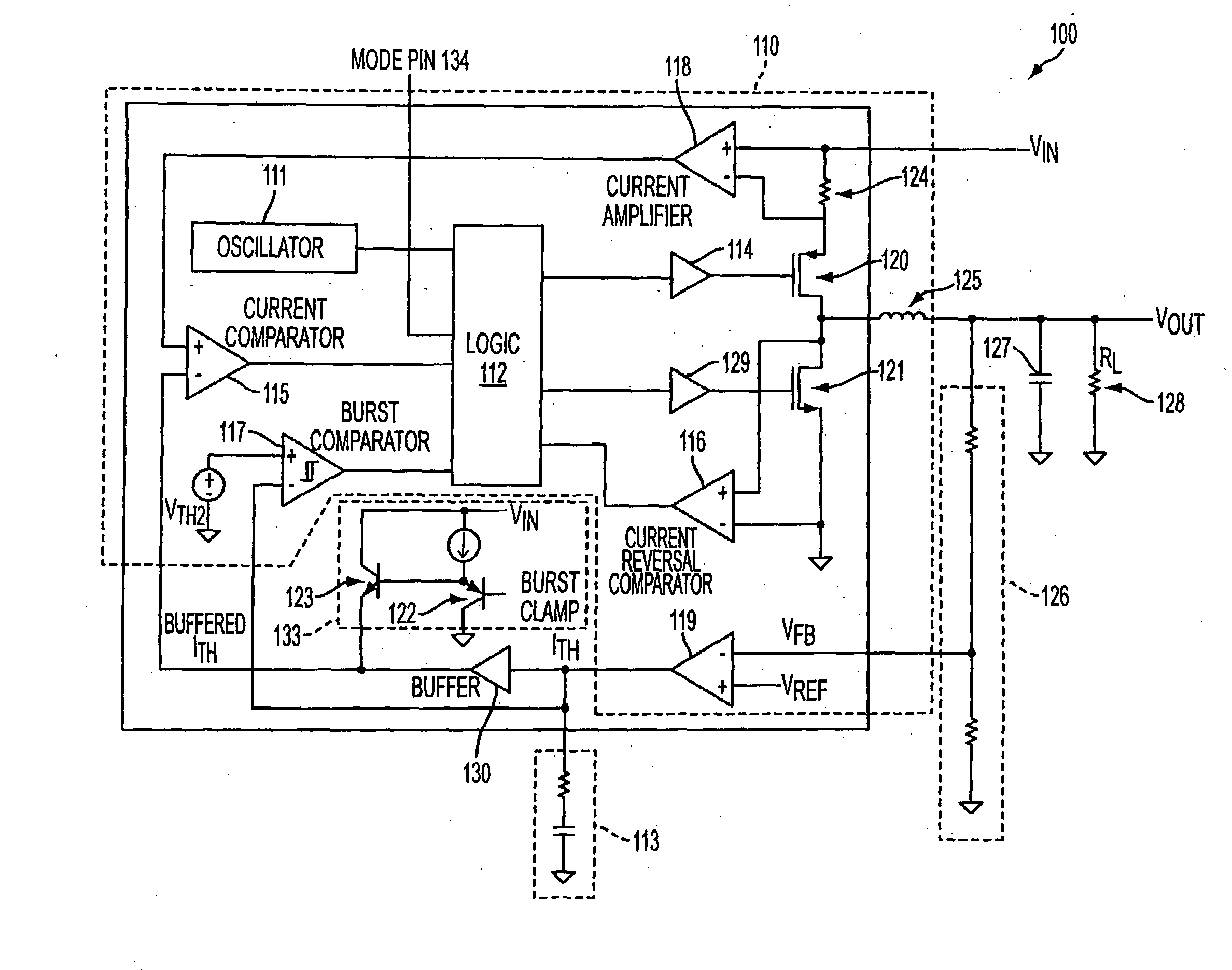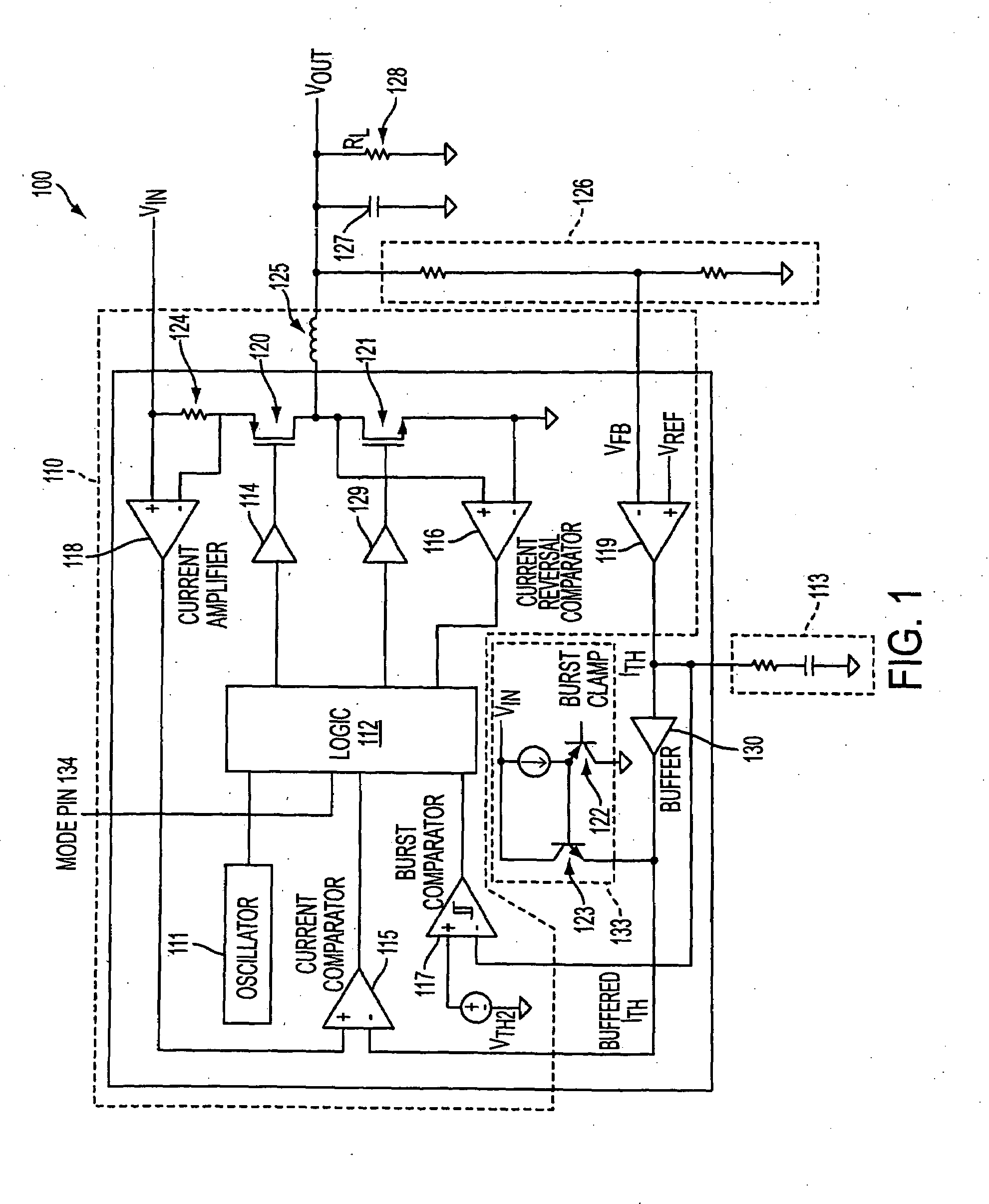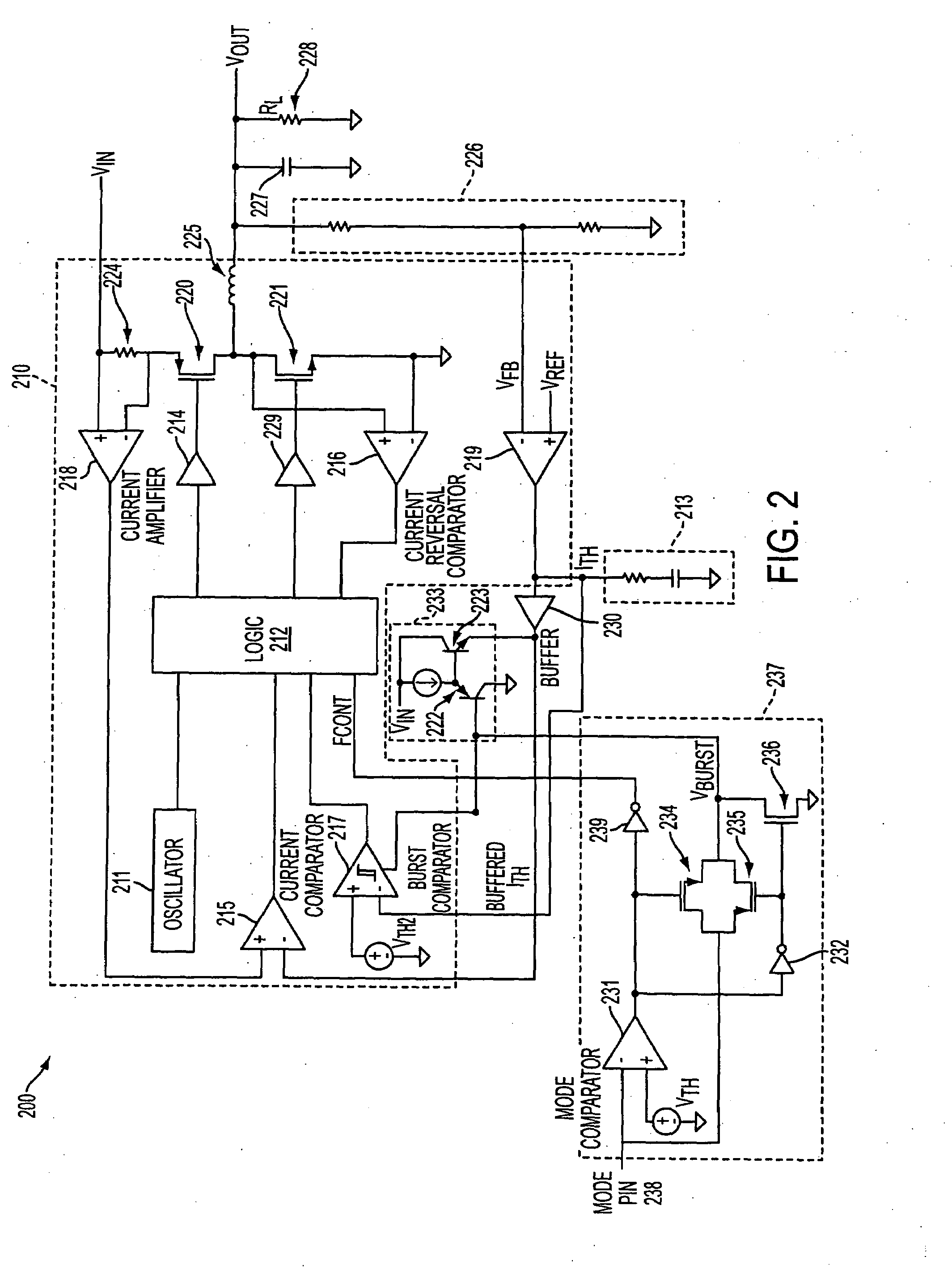Circuits and methods for adjustable peak inductor current and hysteresis for burst mode in switching regulators
a switching regulator and peak inductor technology, which is applied in the direction of electric variable regulation, process and machine control, instruments, etc., can solve the problems of reducing unable to maximize the efficiency of switching regulators, and inherent current limitation capabilities, so as to achieve large output voltage ripple and reduce efficiency
- Summary
- Abstract
- Description
- Claims
- Application Information
AI Technical Summary
Benefits of technology
Problems solved by technology
Method used
Image
Examples
Embodiment Construction
[0041]Many electronic products use DC-DC switching regulators to convert an input voltage into a regulated output voltage that may be higher or lower than the input voltage. Switching regulators use one or more active switching devices, an inductor or transformer, and a capacitor to store and transfer the energy into the load.
[0042]FIG. 1 shows a conventional, step-down switching voltage regulator using a constant-frequency, current-mode control architecture. The circuit operates as follows.
[0043]Voltage regulator 100 of FIG. 1 comprises control circuitry 110, which incorporates oscillator 111 or any other suitable device which is capable of providing the circuit with switch timing (i.e., by generating a narrow pulse at a constant frequency). At the beginning of each cycle this oscillator pulse propagates through logic 112, which then directs main switch driver 114 to turn main switch 120 ON. Logic 112 may comprise a pulse-width modulator (PWM) circuit or any other suitable circuit ...
PUM
 Login to View More
Login to View More Abstract
Description
Claims
Application Information
 Login to View More
Login to View More - R&D
- Intellectual Property
- Life Sciences
- Materials
- Tech Scout
- Unparalleled Data Quality
- Higher Quality Content
- 60% Fewer Hallucinations
Browse by: Latest US Patents, China's latest patents, Technical Efficacy Thesaurus, Application Domain, Technology Topic, Popular Technical Reports.
© 2025 PatSnap. All rights reserved.Legal|Privacy policy|Modern Slavery Act Transparency Statement|Sitemap|About US| Contact US: help@patsnap.com



